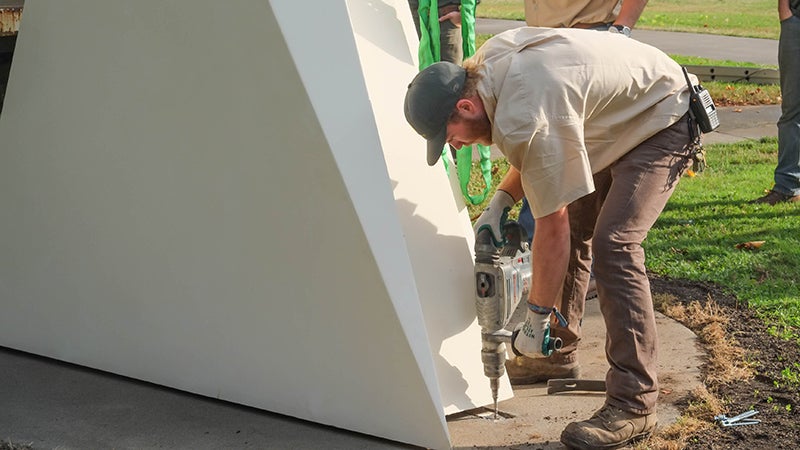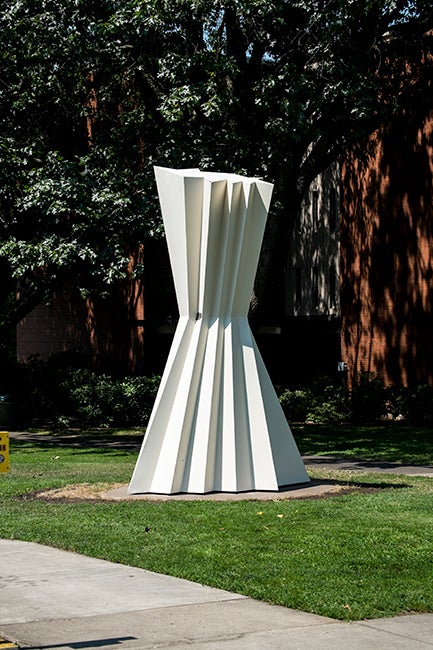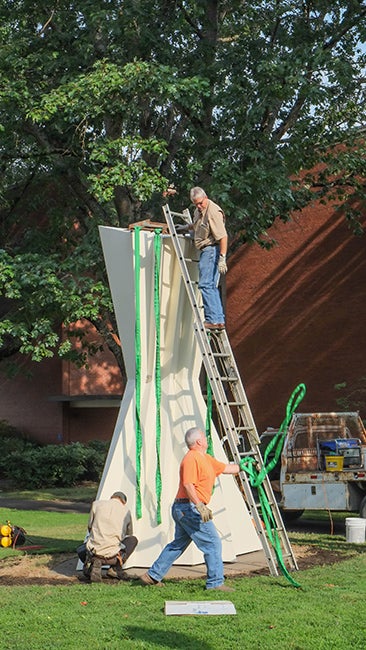The UO campus recently debuted its newest work of public art, on the lawn between Prince Lucien Campbell and Condon Halls. Former Department of Art faculty member Jan Zach’s 14-foot-tall, painted steel sculpture “Lady” was donated to the Jordan Schnitzer Museum of Art in 2014.
“Lady” was Zach’s final project. The sculpture originated as a commission from his friend Inacio Peixoto (in memory of his wife, Amelinha), and was a work in progress at the time of his death in 1986. Ten years later, Zach’s former student Jerry Harpster, MFA ’80, fabricated the sculpture as his late mentor had envisioned it.
“Its monolithic presence harkens back to Zach’s earlier steel flower sculptures of the 1960s,” says Danielle Knapp, McCosh associate curator at the Jordan Schnitzer Museum of Art (JSMA), “and it is the culmination of his interest in larger-than-life variations on the female form.”
Zach is highly regarded as a contributor to the development of modernism in the Pacific Northwest and served on the A&AA faculty from 1958 to 1979. He sculpted in a variety of media, including wood, cast aluminum, and stainless steel. His works were experimental yet grounded in modern aesthetics and forms. Freedom and the human condition were constant sources of inspiration.
This new installation is a short walk from Zach’s cast iron and concrete compound sculpture “Prometheus” (1958) on the JSMA’s northwest lawn.

Above: UO staff members bolt Zach’s sculpture to the ground.

Above: The work “is the culmination of [Zach’s] interest in larger-than-life variations on the female form,” says Danielle Knapp, McCosh associate curator at JSMA. The sculpture originated as a commission from Zach’s friend Inacio Peixoto (in memory of his wife, Amelinha), and was a work in progress at the time of his death in 1986. Ten years later, Zach’s former student Jerry Harpster fabricated the sculpture as his late mentor had envisioned it.

Above: Jan Zach’s 14-foot-tall, painted steel sculpture “Lady” nears final installation on the lawn between Prince Lucien Campbell and Condon Halls. Photos courtesy Jordan Schnitzer Museum of Art.
